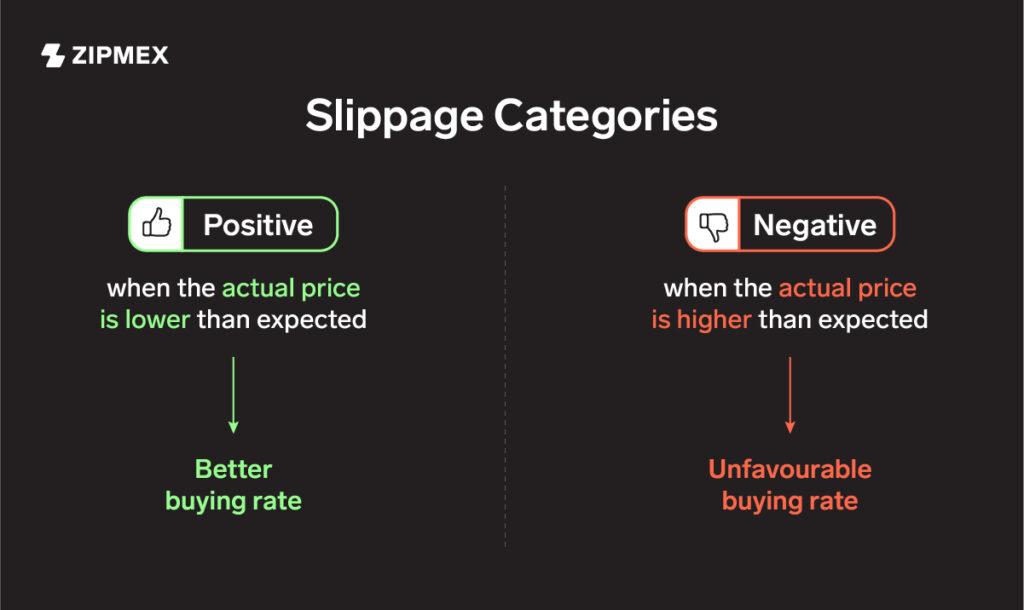Slippage is an inevitable phenomenon when trading in any market, from stocks to crypto. So what is slippage? How to minimize slippage when trading?
Table of contents
- What is Slippage?
- Causes of price slippage
- Slippage is a phenomenon that always happens in trading
- 7 ways to minimize Slippage when trading
1. What is Slippage?
Slippage occurs when your order is executed at a different price than expected. Slippage usually occurs during a period of very strong market volatility/low market liquidity/there is a large difference between the trading volume of buyers and sellers.
Slippage has 2 types:
- Beneficial slippage: When you want to buy the GMT/USD pair at 3.3120 but the slippage triggers an order at 3.315 (Lower than the floor price shown), this is a positive slippage. On the contrary, if it is the case of a sell order.
- Adverse Slippage: When you want to buy the GMT/USD pair at 3.3120 but slip up to trigger an order at 3.3135 (Higher than the floor price shown), this is an adverse slippage - negative. On the contrary, if it is the case of a sell order.
2. Causes of price slippage
The market is volatile
When the market has good news or bad news, the price starts to change abnormally, traders will have a fear and race to order regardless of the price. This leads to a rather high slippage.
Example: ETH's martket price is 2500 USD.
When the bad news comes out, the market is dumping, you will not be able to sell ETH for 2500 USD because the order will definitely not match.
So you have to place lower order of 2490 USD or 2495 USD for fast order execution. At this point, the slippage for your order is 10 USD/5 USD for 1 ETH trade.
High trading volume also causes slippage
When buying a coin on the CEX floor, the Sell wall and Buy wall are quite thin, only a few thousand USDT, but you want to buy 1 time to several hundred thousand USDT, which will lead to a huge slippage.
Low liquidity (the market is not liquid enough)
For CEX brokers, liquidity is usually decided by the exchange (For example, Remitano always records a slippage of 0.01% from the original price right below each of your orders). So low liquidity occurs only on DEX exchanges.
Normally, each pool on DEX exchanges will have a ratio of 50/50 of two assets (for example, ETH/USDT will account for 50% of ETH, and USDT will account for 50% of that pool).
But there are pools with almost no liquidity, or very poor liquidity, leading to price slippage up to 60-70%. If any new member does not understand clearly, they may be divided by 2, divided by 5 assets.
3. Slippage is a phenomenon that always happens in trading
As mentioned above, slippage is of two types, beneficial or harmful. If profitable, traders can make huge profits, otherwise, their accounts can be burned quickly.
This is a phenomenon that happens constantly and is encountered by thousands of traders around the world. In the future, it will certainly happen more often when the market is constantly receiving political news (like Ukraine and Russia recently).
4. 7 ways to minimize Slippage when trading
Is it possible to completely avoid slippage when trading? Can not. Because as mentioned above, slippage depends on political news in the world quite a lot and you can't predict when such news will happen.
However, you can minimize slippage by the following 7 ways:
- Choose a pool of high liquidity when trading on DEXs.
- When the market is volatile, trading should be avoided.
- Split into several small buys when trading in large volumes.
- When important news appears, affecting the price should limit trading.
- If you want the order to execute quickly, to avoid slippage, the gas fee should be higher.
- Limit trading with high leverage.
- Should choose to trade at reputable exchanges to avoid price slippage.



